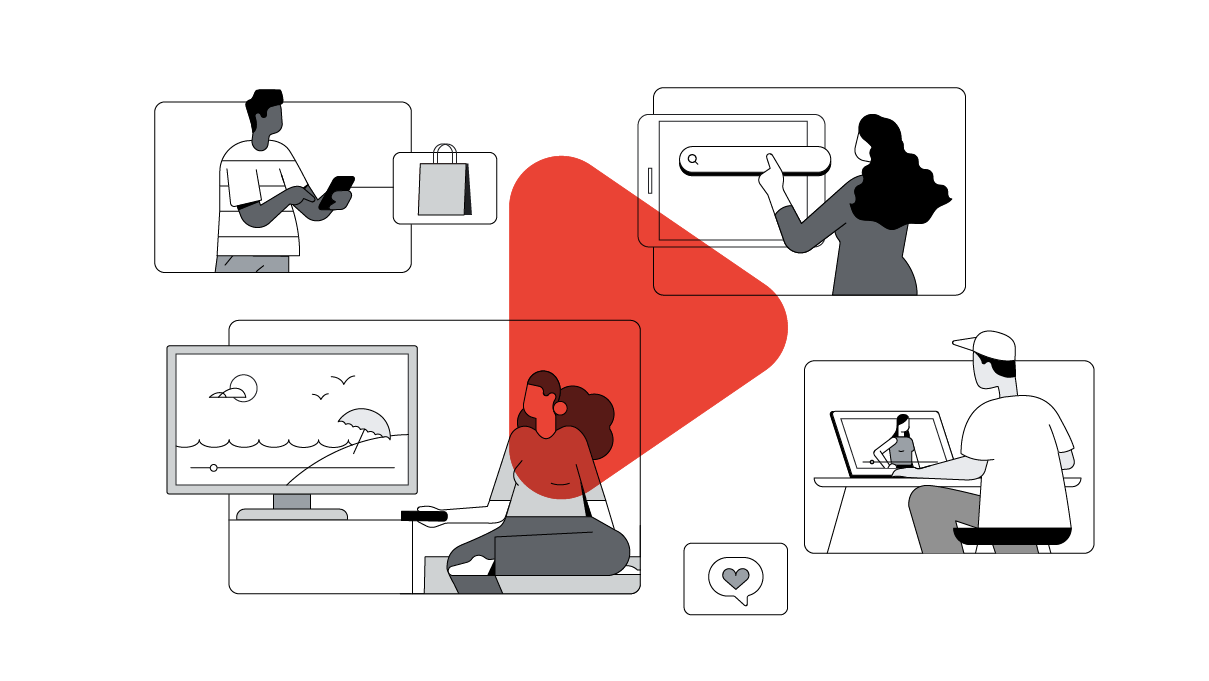- Viewability and quality of reach metrics show marketers which video ads were watched and heard by a real person, helping them understand the full impact of their media spend.
- Partnering with third-party analytics companies is an important step for tracking viewability metrics across different platforms.
- Using third-party tracking, studies of six brands with varying ad lengths showed that YouTube achieved up to 15X the viewability of other video platforms and up to 46X the reached complete rate (percent of impressions where ad was played to completion).
When it comes to finding an audience that’s crazy about online video, marketers need look no further than the Philippines. As of January 2018, 87% of internet users in the Philippines watch online video content for an average of 6.35 hours per week—the fourth highest in the world—so it’s no surprise that more brands are ramping up their investments in video. While digital’s share of total media ad spend in the Philippines has increased by 30% in the past two years,1 there’s growing pressure for marketers to clarify how they evaluate and measure the efficiency of their video ads.
That’s no easy task in today’s world. Consumers watch hours of online content every day across multiple devices, so even if they’re exposed to hundreds of ads along the way, their full attention comes at a premium. Put simply, reach doesn’t automatically equal awareness anymore. Beyond counting the number of impressions an ad receives, it’s important to think more critically about the overall viewing experience by asking questions like these:
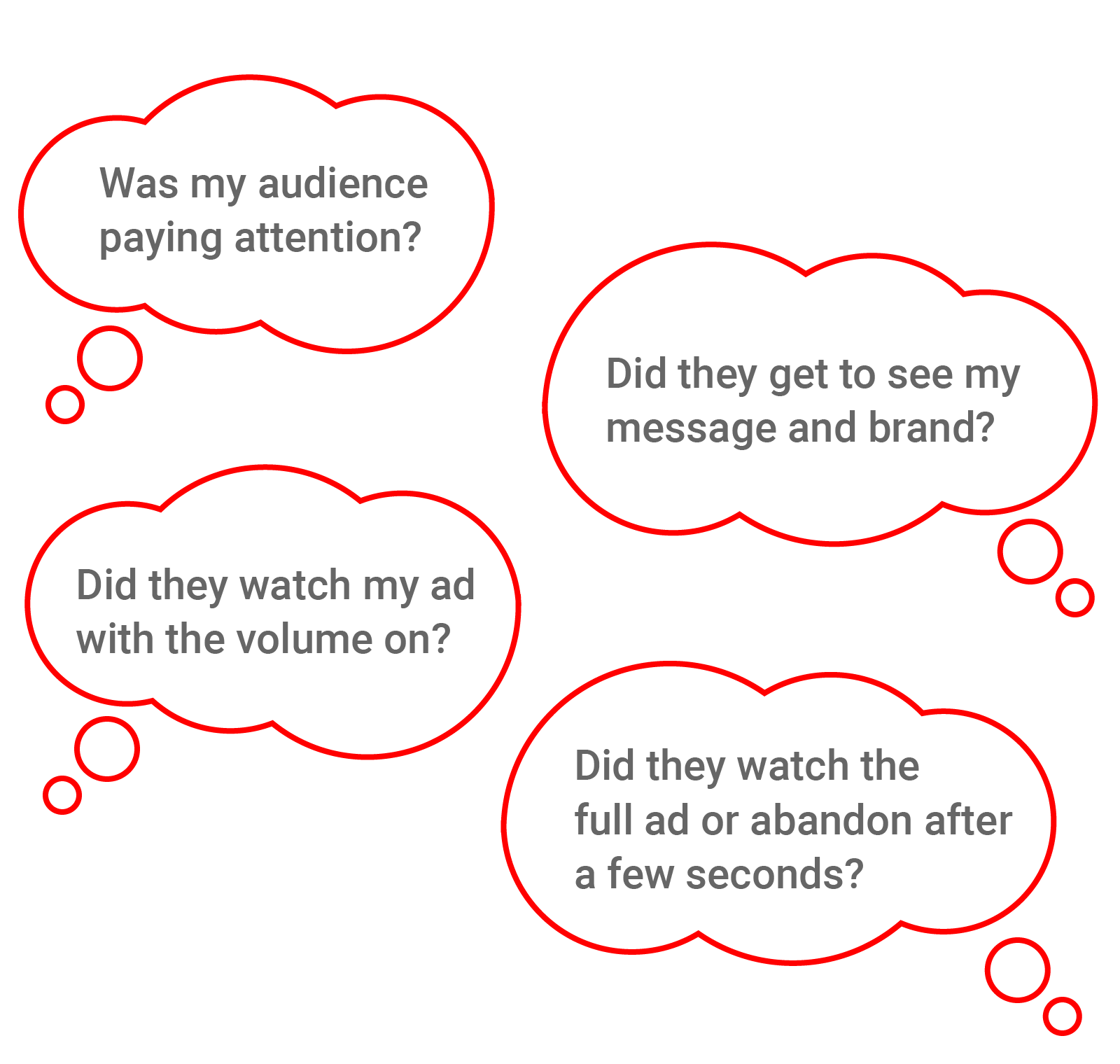
All of these questions boil down to one thing: rethinking which metrics truly matter when it comes to measuring a successful video ad campaign.
Measuring the true quality of a video ad impression
Impressions are important for measuring scale and reach, but they don’t fully reveal the quality of the ad viewing experience. Consider the fact that 35% of video ads across all platforms are never seen, mainly due to ads being served below the fold or fraud (bots).2 And standards vary across the industry for a variety of reasons, including whether auto-plays should be counted the same as viewer-initiated ones, whether an impression should be counted when a video plays partially off screen, or if ads with the sound off should be counted the same as those with the sound on.
Six companies from various industries took part in a study to compare the cross-platform performance of varying ad lengths. The results showed that YouTube achieved up to 15X the viewability of other video platforms and up to 46X the reached complete rate [for a 30-second ad].
The Philippine Digital Measurement Board recommends in its 2017 report that marketers instead look at viewability and quality of reach as the most valuable metrics for gauging the efficiency of a video campaign. Explore their definitions and learn how they can impact brand metrics below:
Tapping third-party measurement resources
While many brands use measurement tools like Brand Lift or their own data to measure their video campaigns, it’s just as important to bring in a third-party measurement source—such as Moat, IAS, or DoubleVerify—to help track viewability metrics across different platforms. Doing so helps brands gather data from a neutral source and compare it with data from video platforms, providing them with a clearer, unbiased view of which platforms perform best.
Six companies in the Philippines from various industries took part in a third-party study to compare the cross-platform performance of varying ad lengths (6s, 15s, 30s, 2 mins and 10 mins), looking at both viewability and reached complete rates. The results showed that YouTube achieved up to 15X the viewability of other video platforms.
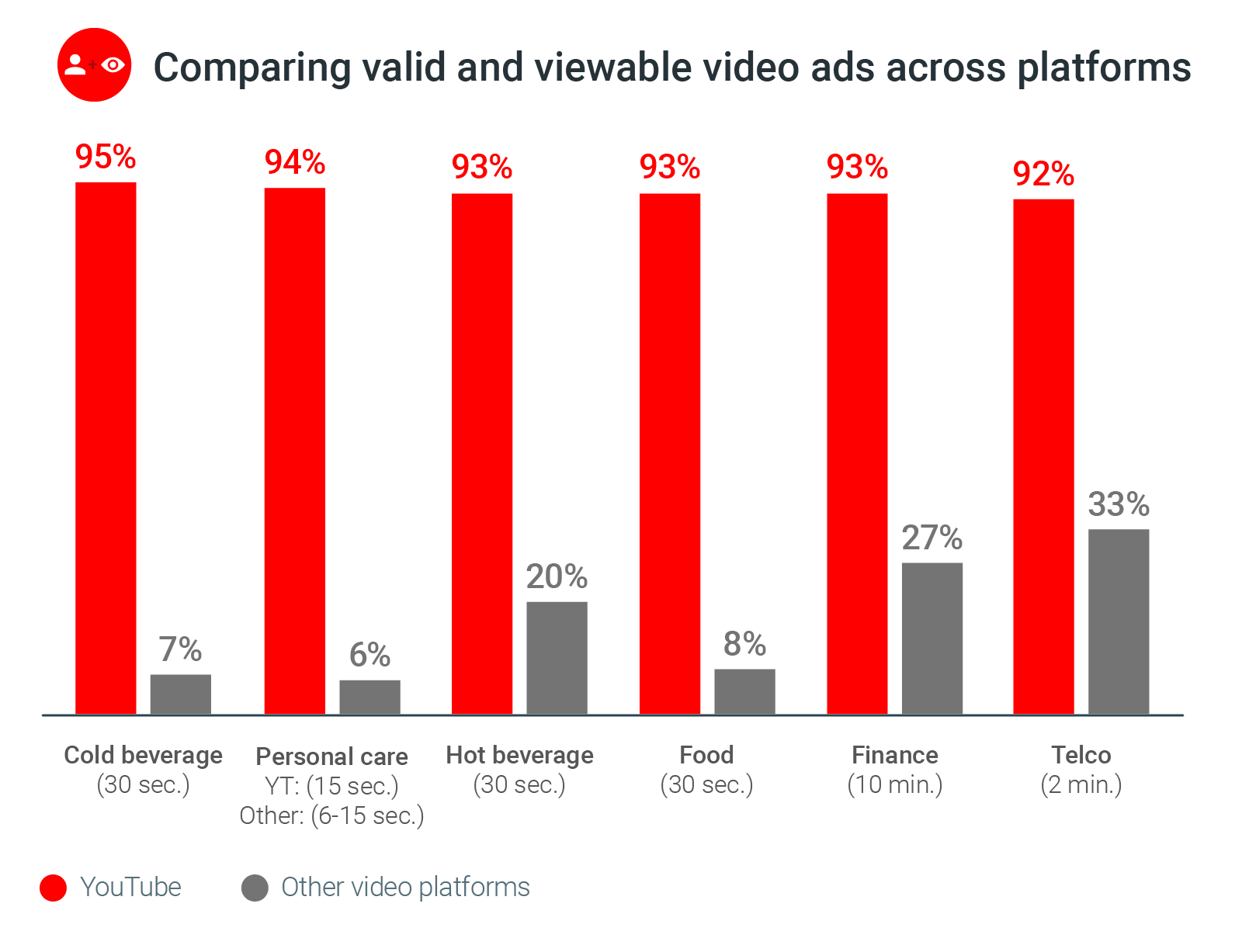
In terms of quality of reach, YouTube achieved up to 106X the reached complete rate and up to 325X the AVOC rates of other video platforms.
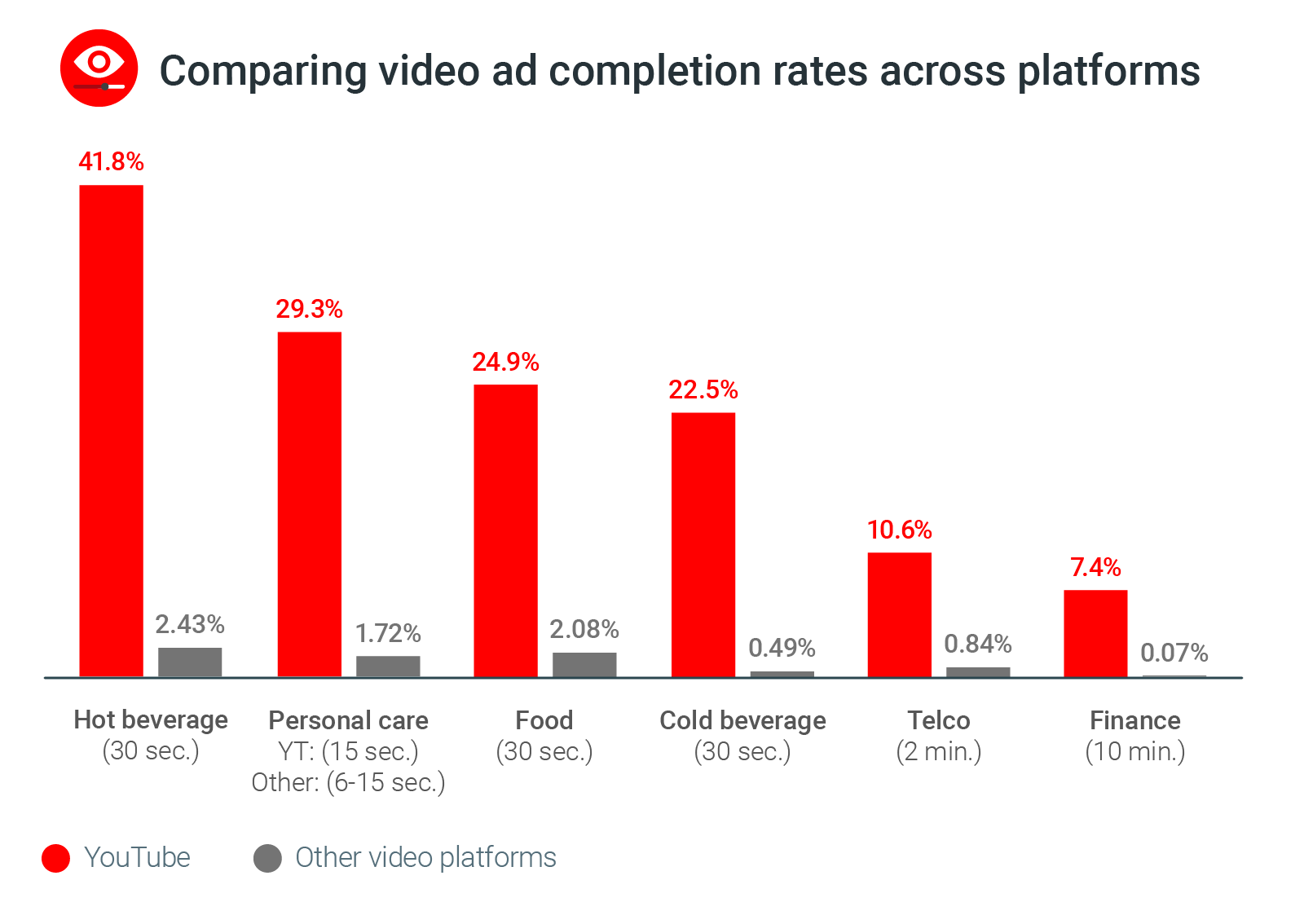
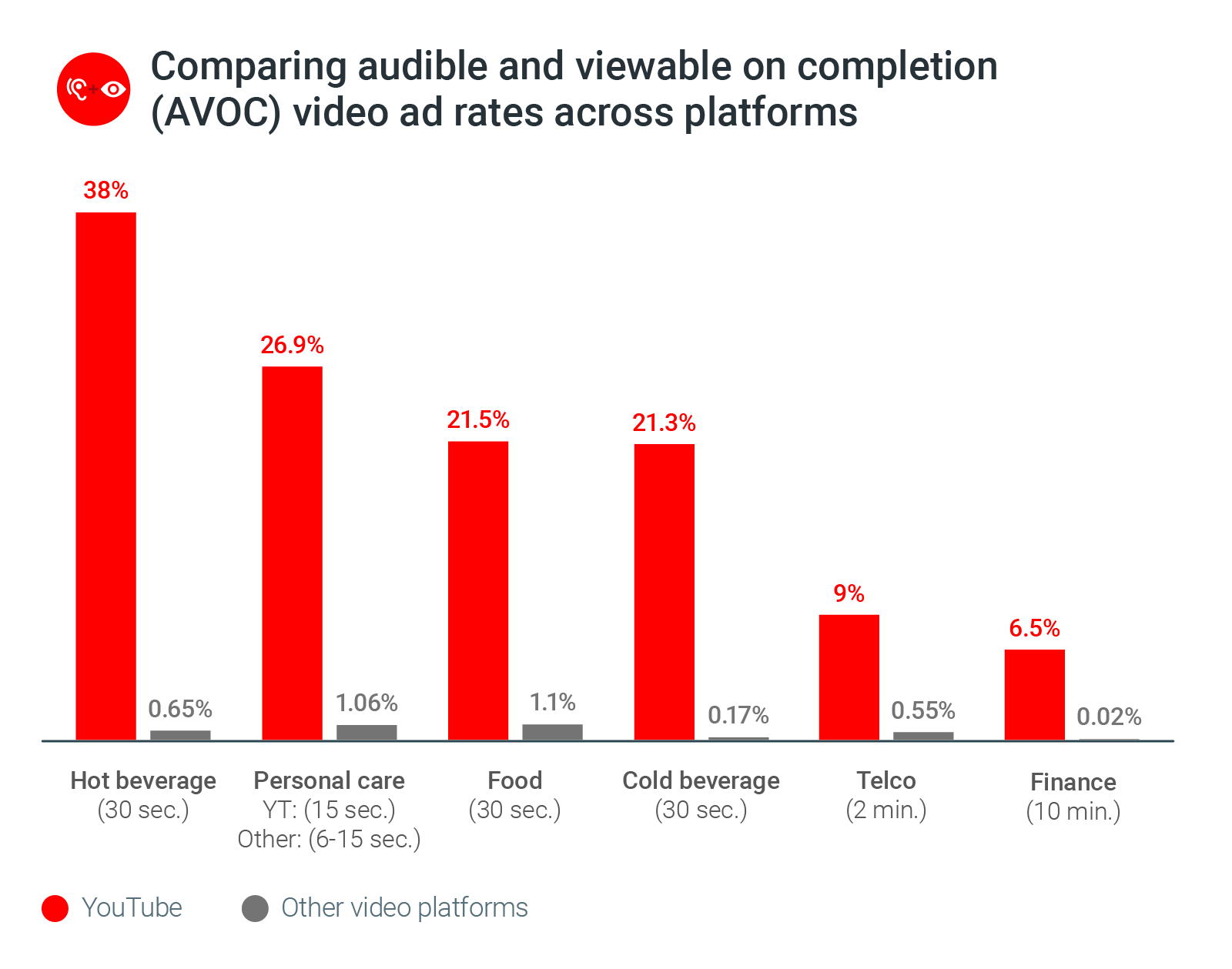
John Michael Joson, head of digital marketing at Philam Life, added, "Pursuing the right metrics often means going beyond what’s obvious. For example, looking at impressions that are valid and audible and viewable on completion is another way of seeing how much branding opportunity the execution gives us. In today’s world where people can choose to ignore advertising and brands, understanding this matters more than ever."
Maybelline Philippines took a similar approach to track and compare the efficiency of its video ads. After four weeks of cross-platform testing, the results inspired Maybelline to shift its entire video spend to YouTube, helping the brand drive a 32% growth in sales and ultimately become the fastest growing brand in its category. “We realized that in the past, we were putting way too much focus on reaching as many people as possible, and we weren’t considering what really delivers our brand message and drives sales: attention and engagement,” said Sandy Tiu, senior product manager for Maybelline Philippines. “Now we're tracking every single campaign and monitoring what each platform provides in terms of viewability extremely closely.”
It’s time to make (and measure) a good impression
Marketers put a lot of time and money into their brand’s video campaigns, aiming to create the most compelling and memorable experience possible. But once the creative is developed and the campaign is out the door, it’s paramount to put just as much thought into tracking and measuring how well the ads are resonating with viewers on different platforms. When marketers strive for a higher quality of impressions rather than just a higher number of them, they’re one giant step closer to understanding the full impact of their media spend.



